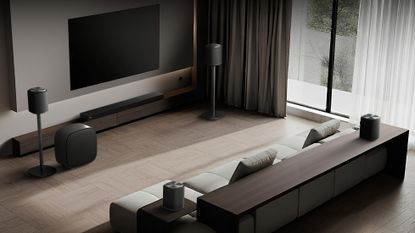Audio
The latest Audio breaking news, comment, reviews and features from the experts at T3
Explore Audio
-

IKEA’s Bang & Olufsen-alike speakers are now available to buy – here's how much they cost
Each version is available to buy now from IKEA’s online store
By Lizzie Wilmot Published
-

Apple has managed to turn my favourite Sci-Fi idea into a reality
Apple's Ron Huang and Areeba Kamal explain how live translation has given the AirPods superpowers
By Mat Gallagher Last updated
-

This new CD Player puts your old Sony Walkman to shame
The Pro-Ject CD Box RS2 Tube is a CD player for the most discerning of audiophiles
By Sam Cross Published
-

These over-ear headphones bring MEMS and Planar Magnetic drivers together – could this be audiophile heaven?
UM's first full-sized headphones combine MEMS and Planars to deliver the strengths of both technologies
By Carrie Marshall Published
-

Buying new earbuds this Christmas? Here are 3 of the best – for all budgets
Choosing wireless earbuds doesn't have to be difficult
By David Nield Published
-

Gift a great Bluetooth speaker this Christmas – the 3 best for all budgets
Festive fun for your ears – at budget, middle and luxury price points
By Mike Lowe Published
-

I've tested the Pixel Buds 2a and there's one thing I miss from the Buds Pro
Save cash with Pixel Buds 2a if you're happy to forego this feature
By Chris Hall Published
-

I've tested the new Echo speakers, but there's one thing we need to talk about
One of the stars of the Echo line-up is no more
By Chris Hall Published
-

Want a vinyl player for Christmas? The 3 best Bluetooth record players for all budgets
Pitching three of the best BT turntables head-to-head in this festive face-off
By Simon Lucas Published
-

This small box from Sweden turns any speaker into a smart speaker for less than you'd think
Turn any speaker into an Amazon Echo rival with the Atonemo Streamplayer
By Sam Cross Published
-

The Marshall Kilburn III is my top Bluetooth speaker and not because of the sound quality
It's an example of what happens when form and function collide
By Chris Hall Published
-
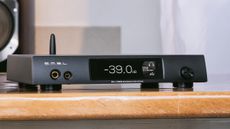
This high-spec headphone amp punches way above its price tag
The FiiO K15 has a high-powered rival in the form of the SMSL DL400
By Carrie Marshall Published
-

Huawei thinks open-ear buds are the next big thing and FreeClip 2 makes a strong case
Huawei’s new headphones prove the open-ear buds niche is heating up
By Matt Kollat Published
-

WiiM's Sonos-rivalling smart speaker now has a more wallet-friendly sibling
The WiiM Sound Lite offers a compelling package at a lower price point
By Sam Cross Published
-

New Bang & Olufsen speakers are an exercise in the exotic – but will you choose flamboyant or understated?
When sound becomes art, Bang & Olufsen is leading the charge
By Sam Cross Published
-
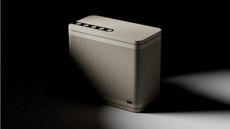
You might not have heard of ELAC’s minimalist Bluetooth speaker before, but you should
ELAC celebrates 100 years with a portable and punchy Bluetooth speaker
By Carrie Marshall Published
-

Marshall Middleton II review: A speaker that knows what it's doing
Marshall's upgraded speaker fires on all cylinders
By Max Freeman-Mills Published
-
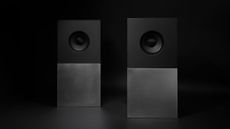
More square than a Minecraft Rubik's Cube – this luxury Swedish speaker is devilishly handsome
The Nocs Braque is a dedication to Cubism with enviable sonic qualities
By Sam Cross Published
-

The Hi-Res player to revitalise your CD collection is now available – and surprisingly affordable
The FiiO DM15 R2R is a high-spec CD player, Bluetooth transmitter, and a resistor ladder DAC
By Carrie Marshall Published
-
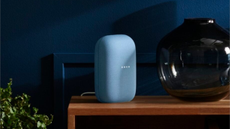
Gemini surprisingly now working on smart speakers not made by Google
It just might take a little time to get it onto yours
By Britta O'Boyle Published
-

This Bluetooth speaker is a genuine Transformer – but it looks like Decepticons picked the price
Robosen's Soundwave Transformer toy is a Bluetooth speaker in disguise
By Carrie Marshall Published
-

These Activo IEMs are an absolute bargain – but there's a catch
Activo's new five-driver IEMs are going to be extremely affordable, but you can't buy them just yet
By Carrie Marshall Last updated
-
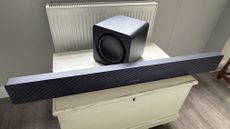
Samsung HW-QS700F review: Uniquely flexible soundbar rocks any room
Samsung's top bar-and-sub combo just got an even better version
By John Archer Published
-

As IKEA forgets Sonos, its new speakers look more Bang & Olufsen-alike
IKEA's Solskydd speaker range is arty, colourful, and not even one bit Sonos...
By Mike Lowe Published
-

Sendy’s elite Egret headphones are coming to battle the premium planars
Sendy says these are its best planar magnetic headphones yet – and they're under £800
By Carrie Marshall Published
-

Chord brings the Mojo back to your headphones
Chord has upgraded its five-star DAC and headphone amp with some very welcome improvements
By Carrie Marshall Published
-

Samsung moves its Galaxy Buds even closer to AirPods – if latest leak is anything to go by
This time it's the regular model that has leaked
By Britta O'Boyle Published
-

CDs are on the comeback trail and this could be the Hi-Res player to help
The FiiO DM15 R2R is a go-anywhere CD deck with built-in Bluetooth and Hi-Res support
By Carrie Marshall Published
-

Sweden's super-small Hi-Res streamer is here to Sonos-ify your speakers
Better late than never – the svelte Streamplayer is finally launching this month
By Carrie Marshall Published
